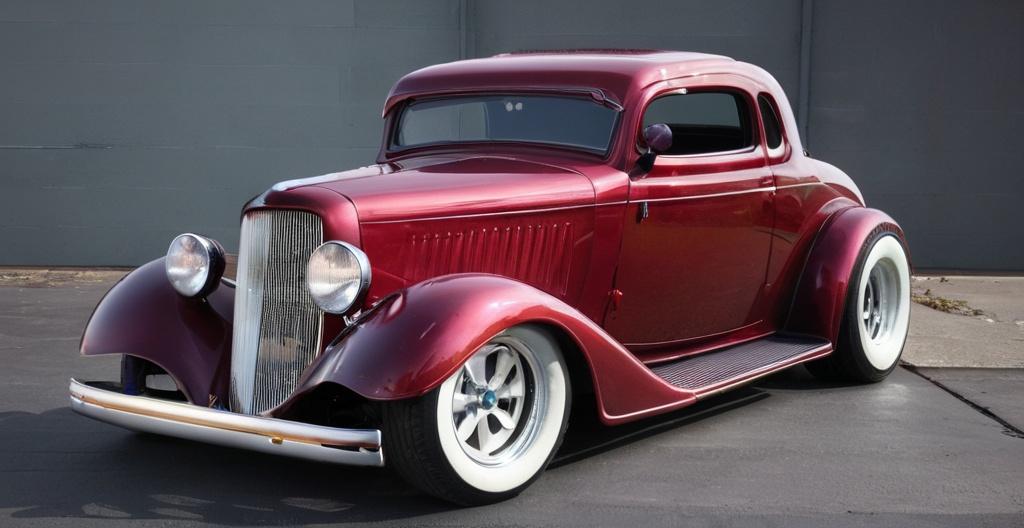Key Take Aways About Welding Techniques for Street Rod Builders
- Welding is essential for street rod durability and performance.
- MIG Welding: Beginner-friendly, versatile, ideal for various materials but not thick metals.
- TIG Welding: Requires skill, precise, suitable for thin materials like body panels.
- Arc Welding: Good for heavy-duty projects, requires post-weld clean-up.
- Select welding technique based on skill level and project needs.
- Preparation and safety are crucial: Clean materials, ensure ventilation, and wear protective gear.
- Personal experience highlights the value of patience and skill in achieving quality results.

Understanding Welding Techniques for Street Rod Builders
Street rod builders know welding is like the duct tape of metalwork. It’s the neat trick that keeps your rod’s parts from scattering down the highway. Whether you’re putting together a chassis or adding some snazzy custom panels, knowing your welding is pretty crucial.
Why Welding Matters in Street Rodding
Street rodding ain’t just about slapping some paint and calling it a day. Those beauties are built to run, and run hard. Welding holds your dream machine together. It’s the backbone, the unsung hero, giving your rod strength and durability. A weld’s gotta hold under speed, stress, and a bit of show-off driving.
Different Welding Techniques
You got options in the welding game. Each technique got its own set of perks and quirks. Picking the right one depends on your car’s needs and your own skill level. Let’s peek at the big three.
MIG Welding
Metal Inert Gas (MIG) welding is like the automatic transmission of welding. It’s a user-friendly, versatile champ. You feed a wire continuously, and that creates your weld. It’s nifty for beginners, ’cause it works well on a variety of materials, from mild steel to aluminum. If you’re working on frame rails or adding brackets, MIG’s your go-to. But watch out, it’s not the best for thick metals.
TIG Welding
Tungsten Inert Gas (TIG) welding is the classic stick shift—requires a bit of finesse. It uses a non-consumable tungsten electrode, and you gotta add filler metal manually. Takes more skill, but oh boy, it’s precise and perfect for thin materials. If you’re looking at body panels or exhaust systems, TIG is where you get that clean, tidy look.
Arc Welding
Then there’s Arc welding, also called Stick welding. It’s the hearty old-timer in welding circles. Kind of like vinyl records—old school but still appreciated. It’s great for heavy-duty projects, like beefing up the frame. It ain’t as clean as MIG or TIG, and you might need some post-weld clean-up, but it gets the job done.
Which Technique Fits Your Street Rod?
It’s all in the match-up between your needs and your skill level. Beginners often start with MIG—it’s forgiving and a good intro to the welding world. If you’ve got the knack and patience, TIG gets those tricky spots looking smooth. Working on hefty materials? Arc handles them like a pro. Sometimes it’s a matter of trying a couple out and seeing which feels like a natural fit.
Preparation and Safety
Never skimp on prep and safety. Clean your materials before you start welding. Dust and grease are not your friend here. And proper ventilation is key. Welding smoke isn’t a fragrance you want to be wearing. Oh, and pop on that helmet. It’s not just a fashion statement.
Personal Insights
I’ve seen my fair share of beater rods turned into show-stoppers. I remember one project where I leaned heavily on TIG for the body work. Took patience, but the clean lines were worth every bead of sweat. It’s all about finding your groove, and sometimes that groove has a few sparks flying.
Conclusion
In the street rodding gig, welding is where the rubber meets the road. You got options, and each one’s got its place. Whether you’re just getting started or you’re looking to refine your techniques, knowing your welds separates the average from the awesome. And hey, it’s all part of the ride, the learning, and the love of your street rod.
